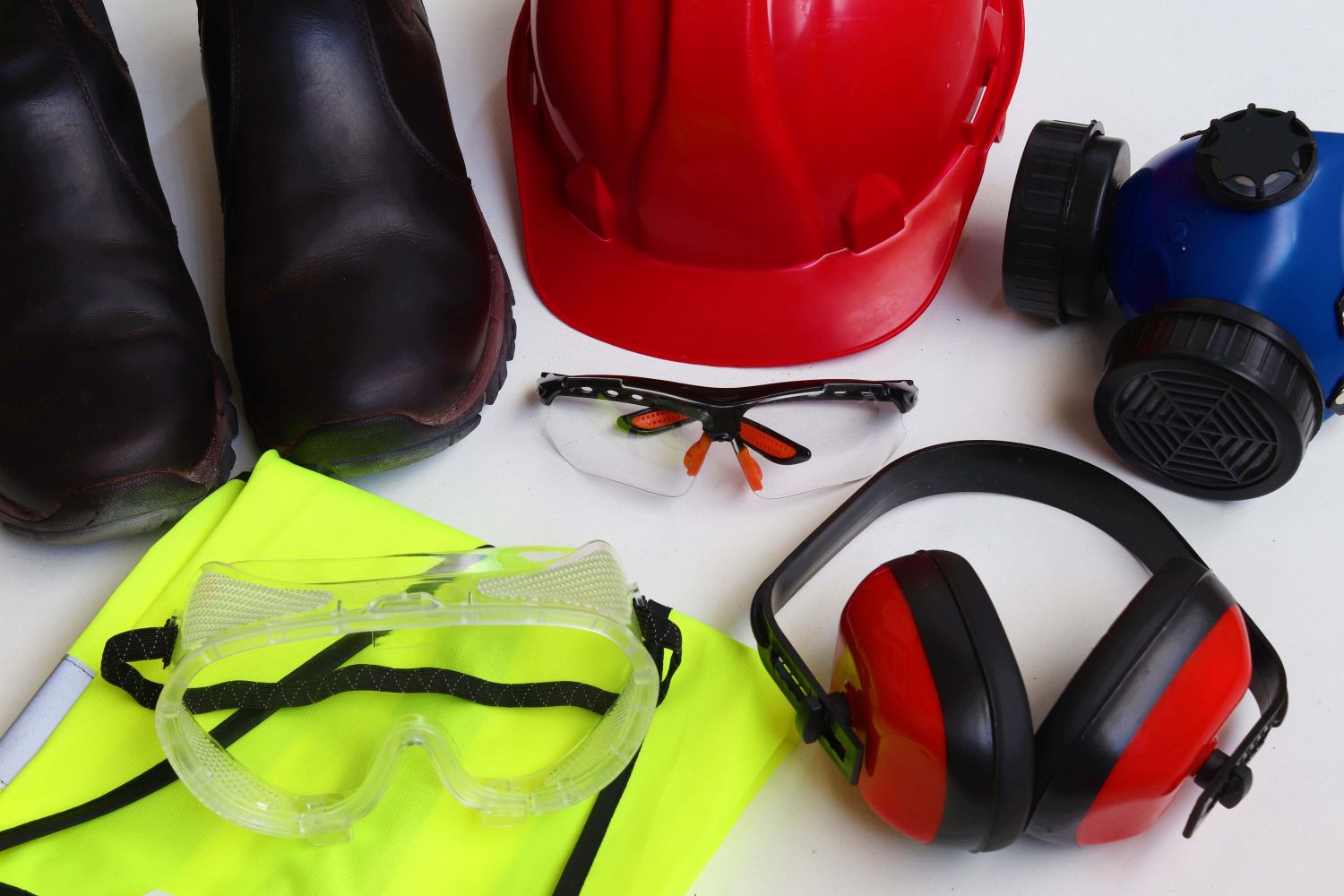The construction industry’s dangerous gamble with substandard PPE
In the construction industry, personal protective equipment (PPE) is often the final barrier between workers and the many hazards they face on-site. Falling debris and dust inhalation to electrical shocks and life-threatening falls, the risks are constant and relentless. That’s why the recent warning from the British Safety Industry Federation (BSIF) should sound alarm bells across the entire sector. According to their latest findings, a staggering 90% of PPE products sourced from non-member suppliers failed to meet basic compliance standards. This is not just a technical concern. It’s a matter of life and death, writes John Ridgeway.
The BSIF tested 161 PPE products from non-member suppliers between December 2023 and December 2024. Of those, only 16 were fully compliant. The remaining 138 failed outright, with several more still pending results. What’s worse is that in some categories - head protection, eye and face protection and fall protection - not a single product passed. This means that countless construction workers may have been relying on safety gear that offers the illusion of protection while exposing them to grave danger.
And yet, despite this damning evidence, the industry’s obsession with price continues to dominate procurement decisions. Why are we still choosing the cheapest bidder over the safest option, especially when the stakes are so high?
Let’s not sugarcoat it - construction is one of the most dangerous industries in the UK and globally. According to the Health and Safety Executive (HSE), the construction sector consistently ranks among the highest for fatal and non-fatal injuries. In 2022/23 alone, there were 45 fatalities in the UK construction sector. Behind every statistic is a human being - a father, mother, son, or daughter - whose life was cut short.
PPE is supposed to be the last line of defence, not a gamble with someone’s life. But when substandard products infiltrate the supply chain, workers are unknowingly exposed to far greater risks. A hard hat that shatters on impact or a harness that fails mid-fall is not just faulty - it’s lethal.
Procurement’s price fixation
In many cases, the problem stems from procurement departments that prioritise cost-saving over quality. On paper, this makes a kind of warped economic sense. If Supplier A offers helmets at £7 and Supplier B, a BSIF-registered company, sells them for £10, the cost-conscious decision would be to choose the cheaper option. Multiply that across thousands of units and the savings look impressive.
But what happens when those £7 helmets fail? When the face shield cracks instead of deflecting a shard of metal? When the harness snaps under pressure? The initial savings pale in comparison to the potential human and financial cost - from compensation claims and litigation to lost productivity and reputational damage.
This is not a new issue. The BSIF and other industry bodies have been raising concerns about counterfeit and substandard PPE for years. During the COVID-19 pandemic, the influx of fake masks and gloves put healthcare workers at severe risk. Lessons should have been learned, but if anything, the construction industry seems to have continued its pursuit of low-cost gear.
Perhaps it’s a case of cognitive dissonance - a belief that "it won’t happen to us." Or maybe it's systemic. Procurement officers are often judged by their ability to reduce costs, not by how well they ensure the safety of the gear they purchase. Until this changes, we will continue to see corners cut, and lives endangered.
The solution is not rocket science. It’s accountability and common sense. First and foremost, construction firms must commit to sourcing PPE from BSIF Registered Safety Suppliers or other accredited bodies. In the same BSIF report, 399 products from member suppliers were tested, and 86% passed the initial assessments. The few that didn’t were promptly addressed.
Secondly, there must be a cultural shift within procurement. Safety can no longer be treated as a box to tick or a cost to minimise. It must be embedded in every decision, from choosing suppliers to performing audits and spot checks.
Thirdly, regulatory enforcement must be stepped up. It should not be left to the BSIF alone to police the market. The government, through the HSE and other bodies, needs to increase inspections and give heavier penalties to companies found using or distributing substandard PPE.
Empowering the workforce
Workers themselves must also be empowered to speak up. Too often, concerns about faulty gear are dismissed or ignored. Sites should have clear reporting mechanisms and a culture that encourages feedback and whistleblowing without fear of retaliation. Education is crucial here. Many workers may not know what compliant PPE looks like or how to tell if their equipment meets safety standards.
Trade unions, industry associations and professional bodies also have a vital role to play in amplifying this message. When these organisations speak with a unified voice, they can exert significant pressure on regulators and companies alike.
It’s encouraging to see campaigns from groups like the Considerate Constructors Scheme and the Construction Leadership Council pushing for higher standards. But the fight against substandard PPE requires a sustained, collective effort.

One potential game-changer is the use of technology to improve PPE traceability. QR codes, digital compliance certificates and blockchain-based verification systems could make it much harder for fake or non-compliant products to enter the supply chain. Forward-thinking companies are already exploring these tools and the broader industry should follow suit.
Let’s also talk about the bottom line, because ironically, investing in high-quality PPE actually makes financial sense. Fewer accidents mean fewer legal claims, reduced downtime, lower insurance premiums and higher employee retention. Workers are more likely to stay with companies that demonstrate a genuine commitment to their well-being.
Moreover, clients increasingly demand evidence of ethical and safe practices. Companies that can prove their PPE procurement is compliant and robust gain a competitive edge in bidding for major contracts.
The BSIF’s findings are a wake-up call the industry cannot afford to ignore. Construction work is dangerous enough without the added risk of ineffective PPE. It's time to stop playing Russian roulette with workers' lives.
Let’s reframe the question from "How much does it cost?" to "How much is a life worth?" Because in the end, that’s what we’re really deciding when we choose between a compliant product and a cheaper, non-compliant one.
The construction industry must now rise to the occasion. We need stronger leadership, stricter enforcement, smarter procurement and a renewed commitment to the people who risk their lives every day to build our world. Let’s make sure they have the real protection they deserve.
Additional Blogs

Are architects losing their influence in the digital era?
For decades, architects have been the central creative force in construction, shaping the buildings we see and the way projects are conceived, communicated and delivered. Their role has been...
Read moreWhy the word “Innovation” has lost its meaning in construction
“Innovation” has become one of the most overused terms in construction. It appears in the dozens of press releases we receive each day, conference talks and project reports, often without any real...
Read more

Retrofit fatigue and are we asking too much of old buildings?
As the world pushes toward net-zero emissions, the pressure to decarbonise our built environment is more intense than ever. Governments, developers and building owners are investing heavily in energy...
Read more